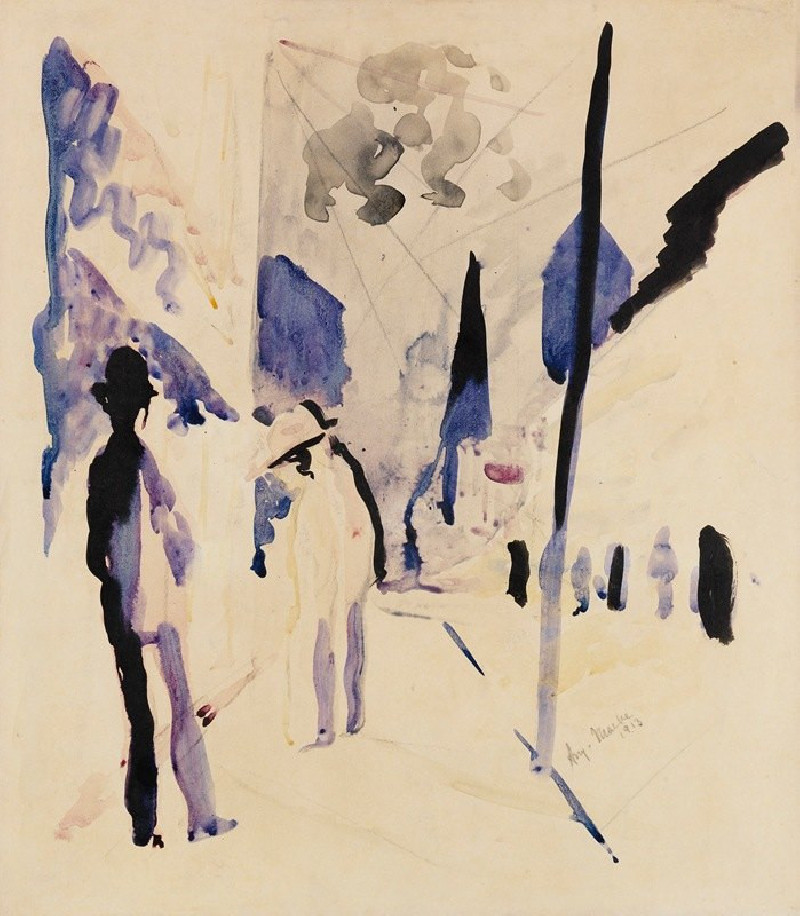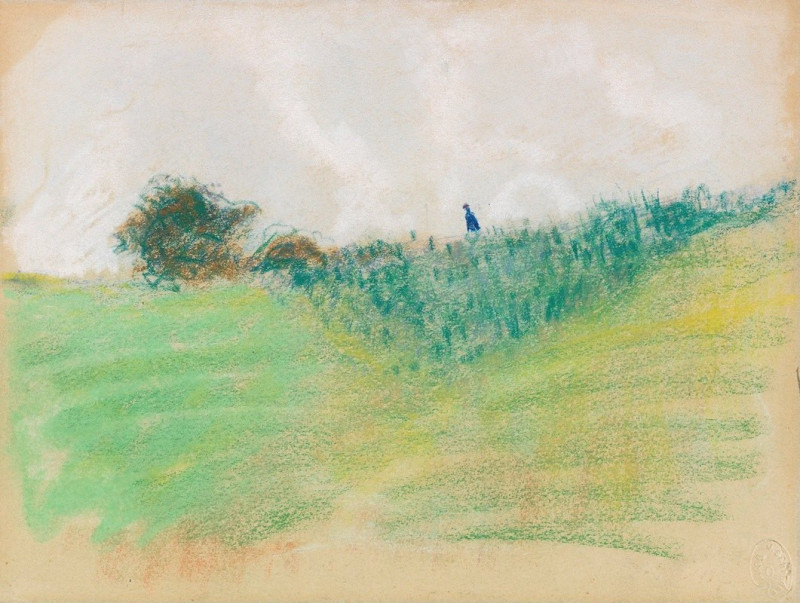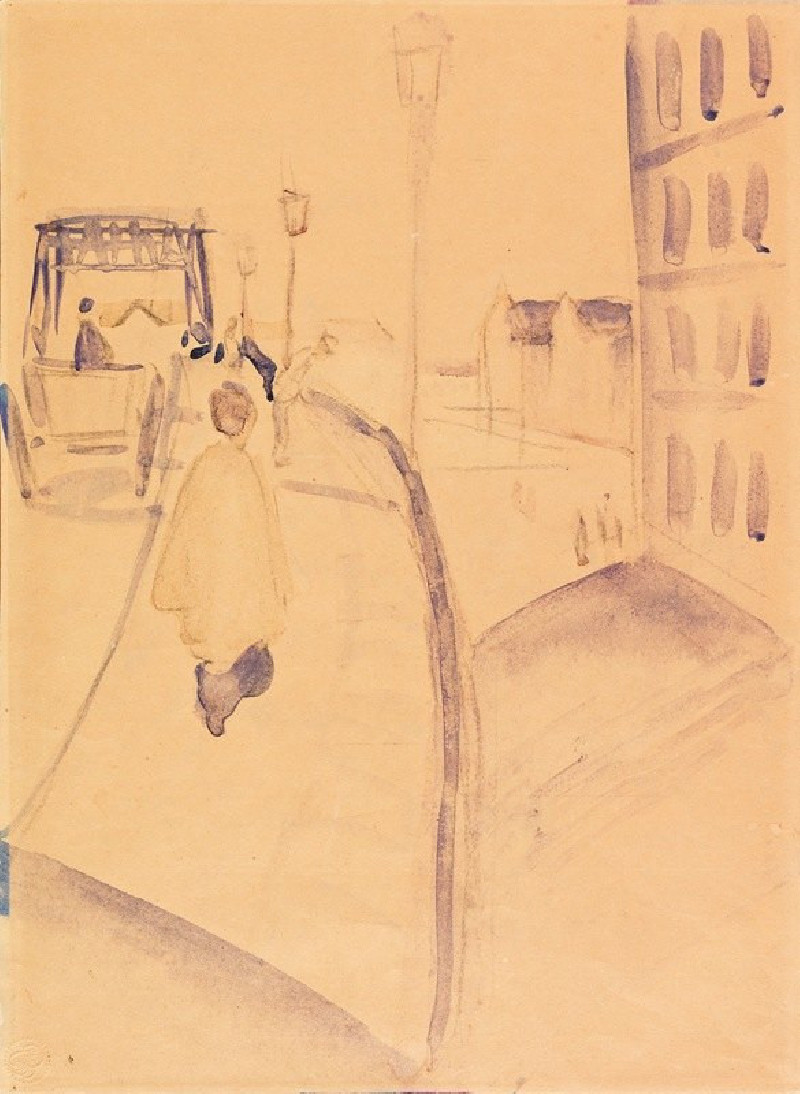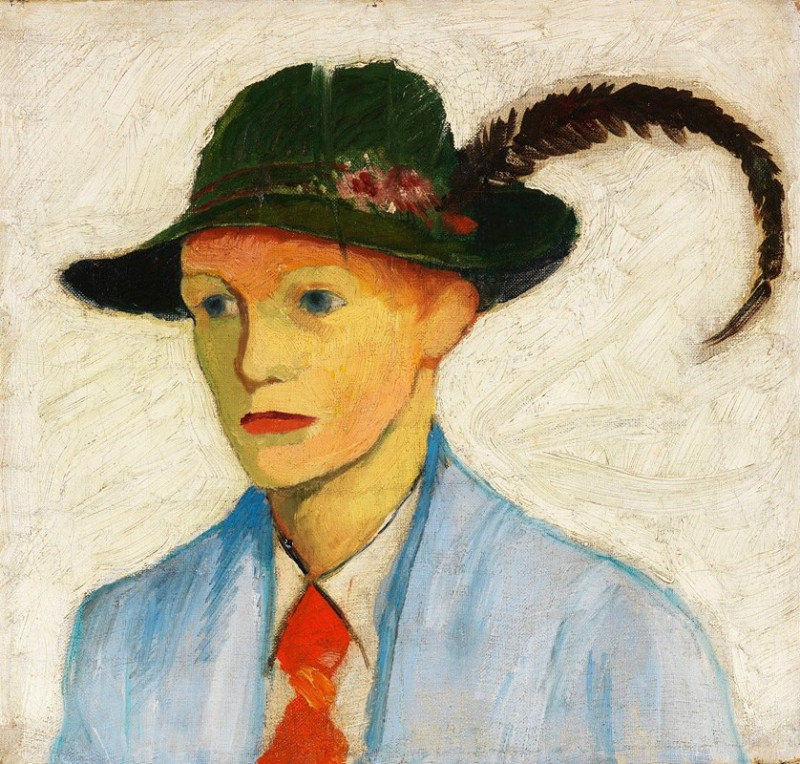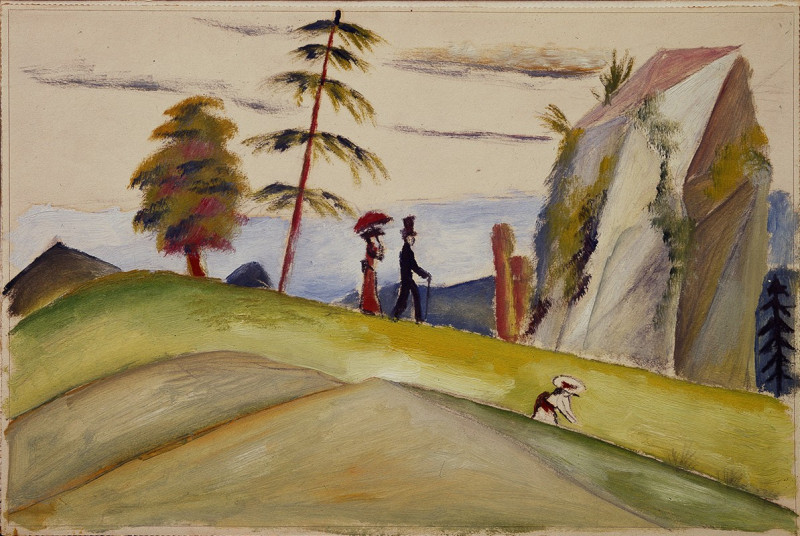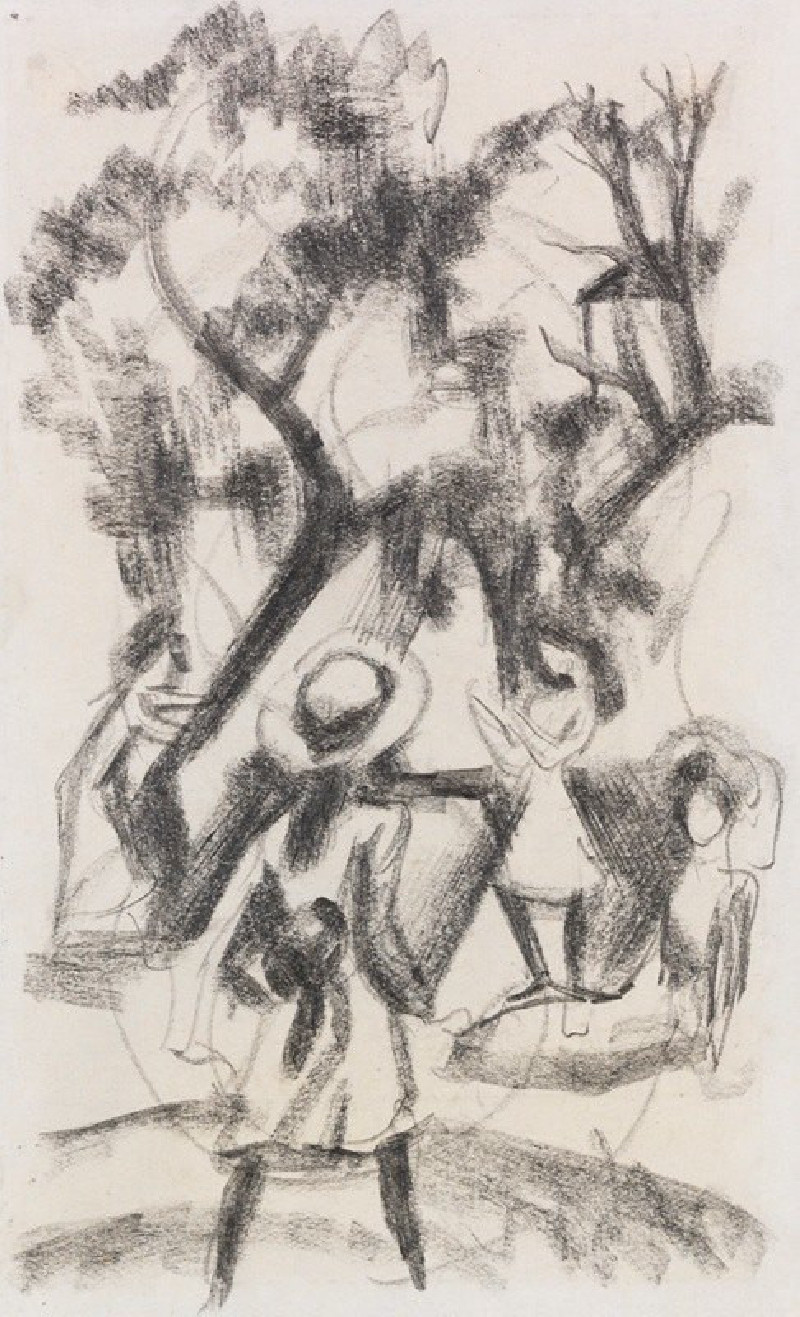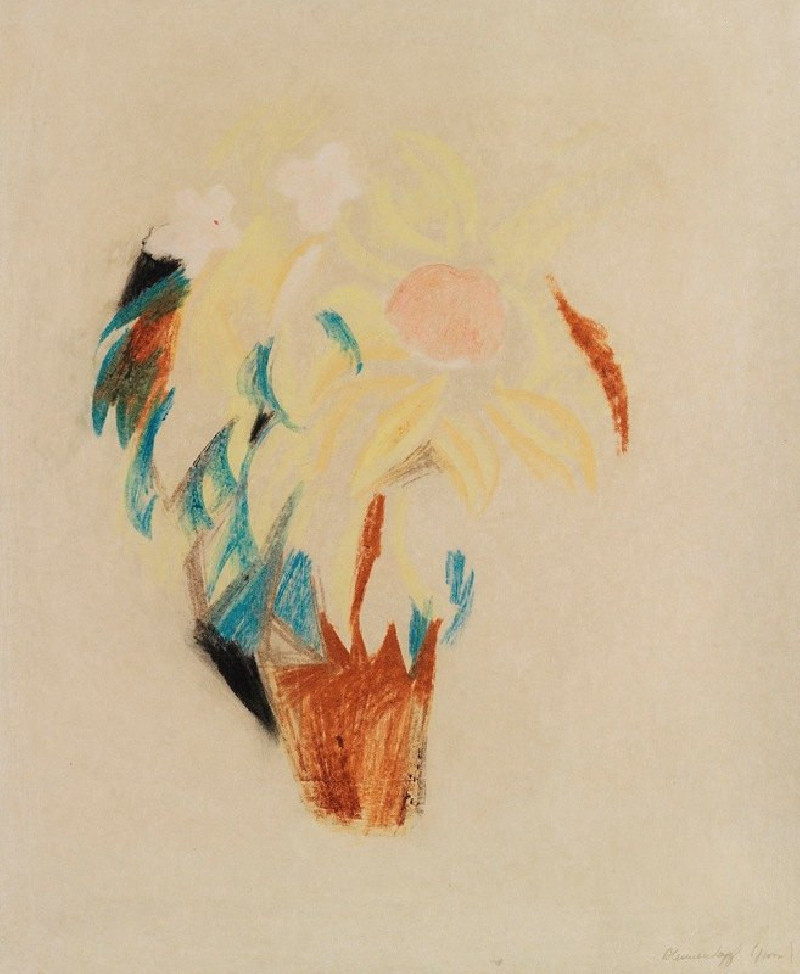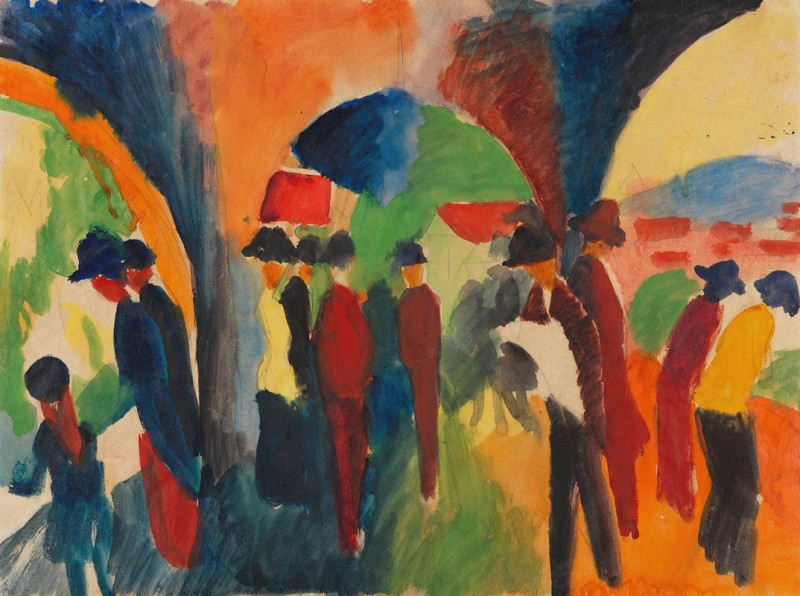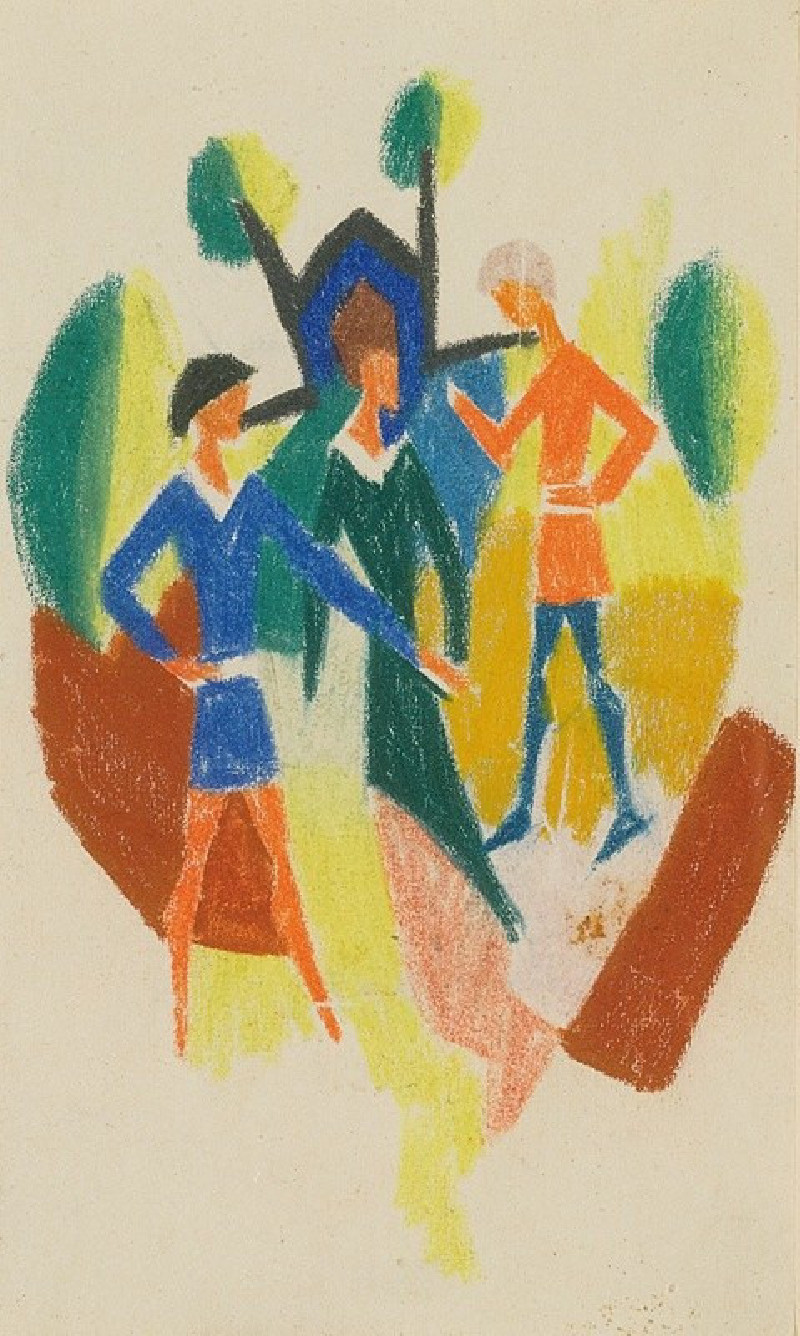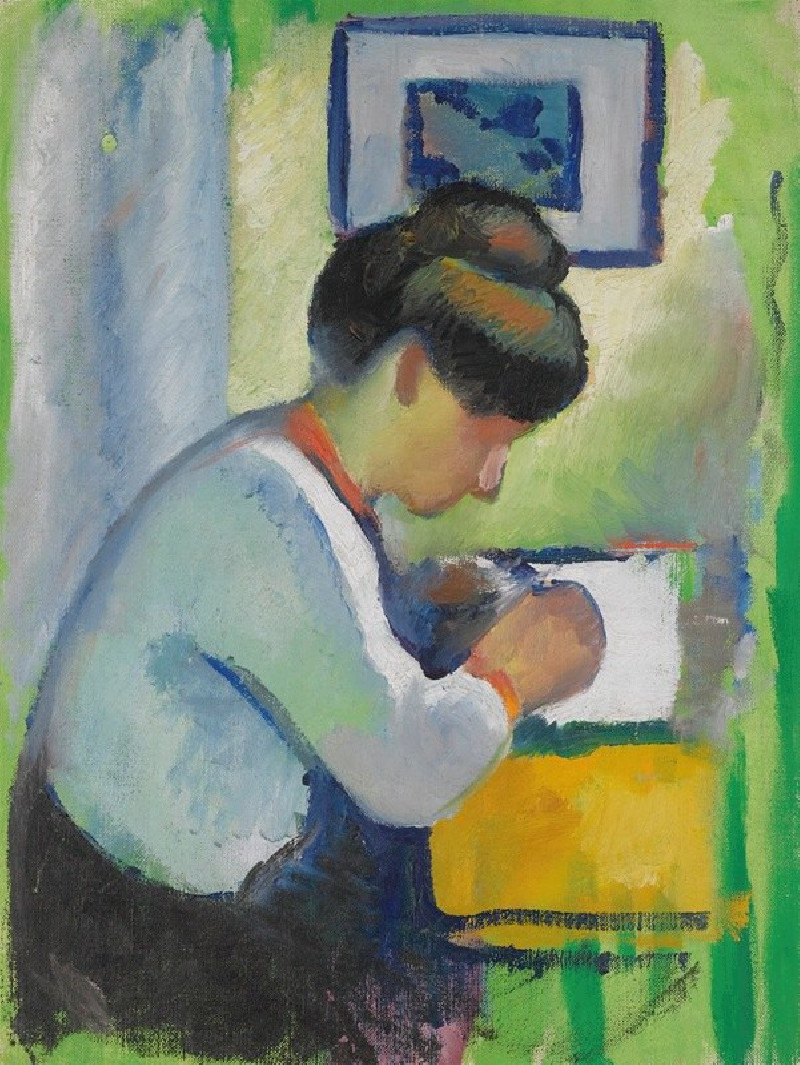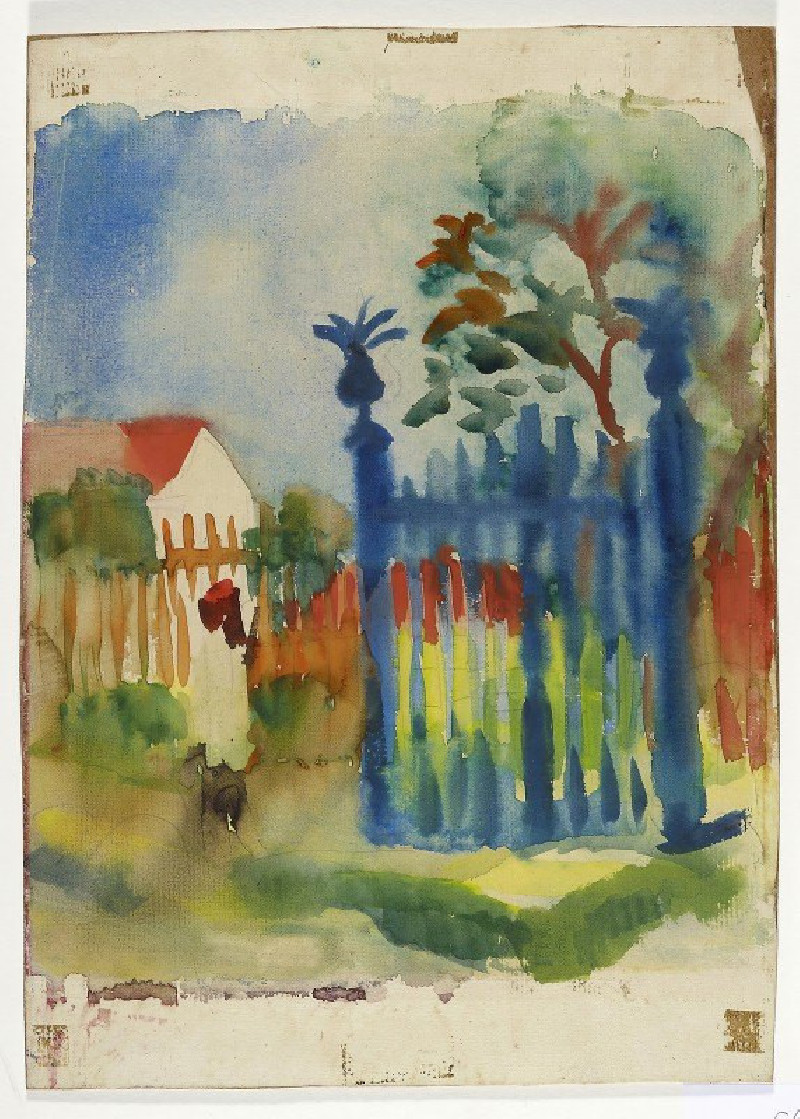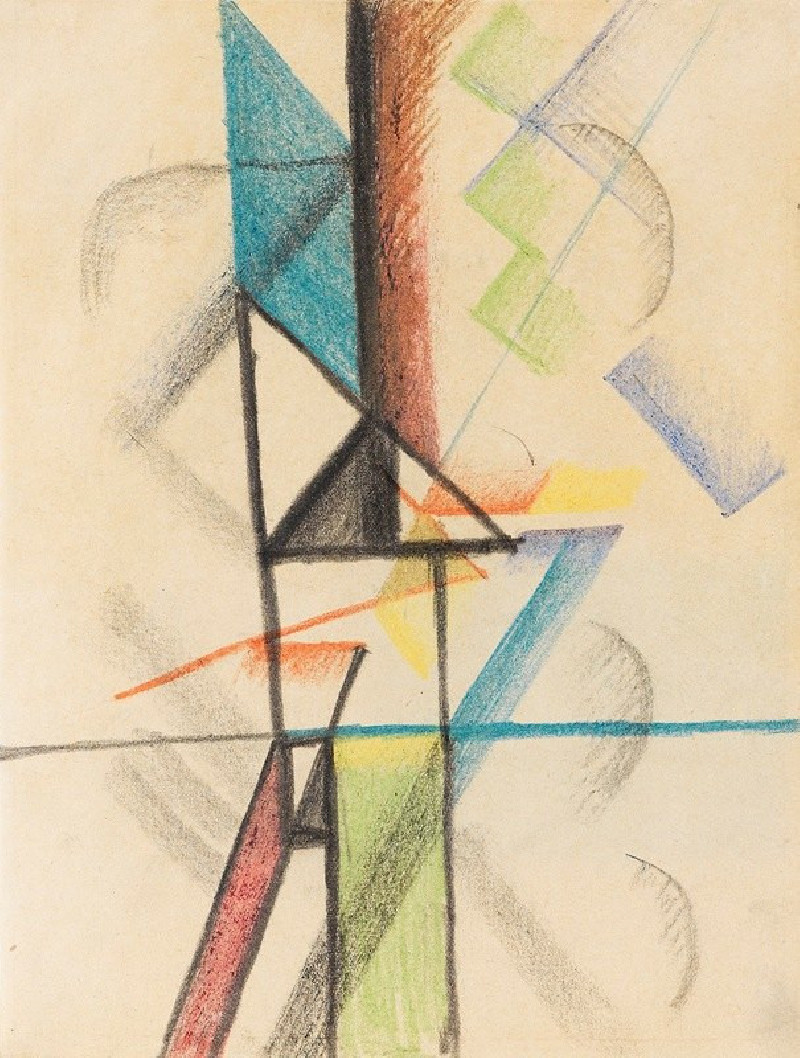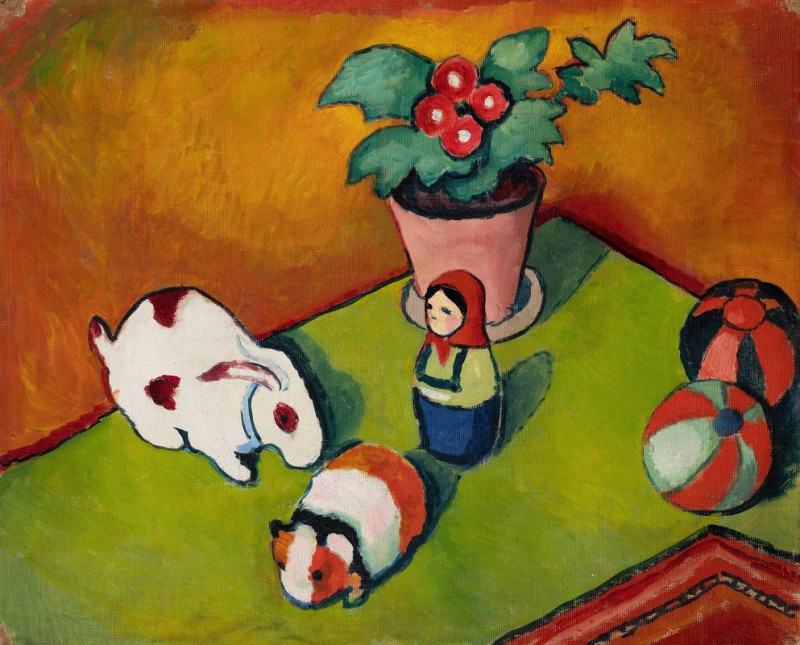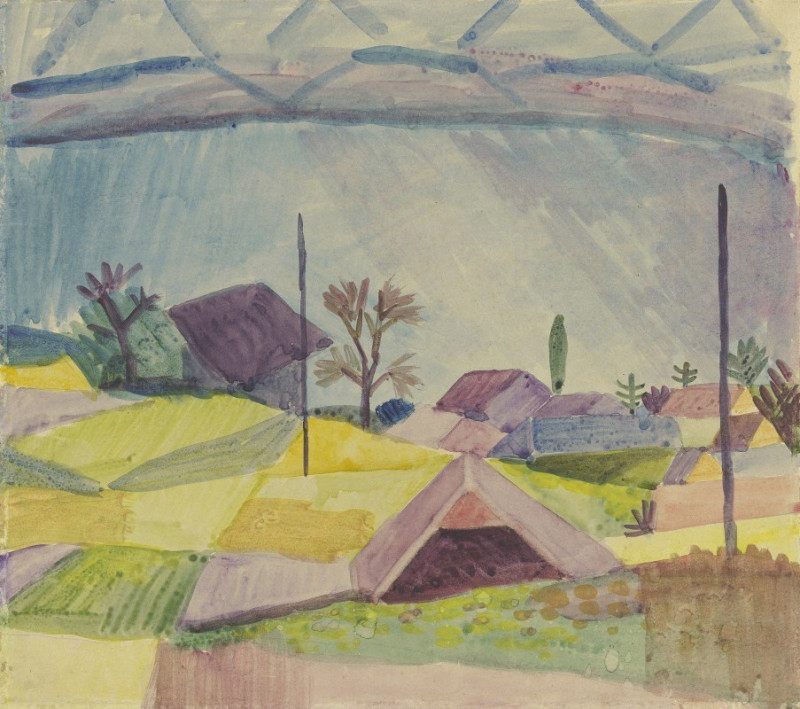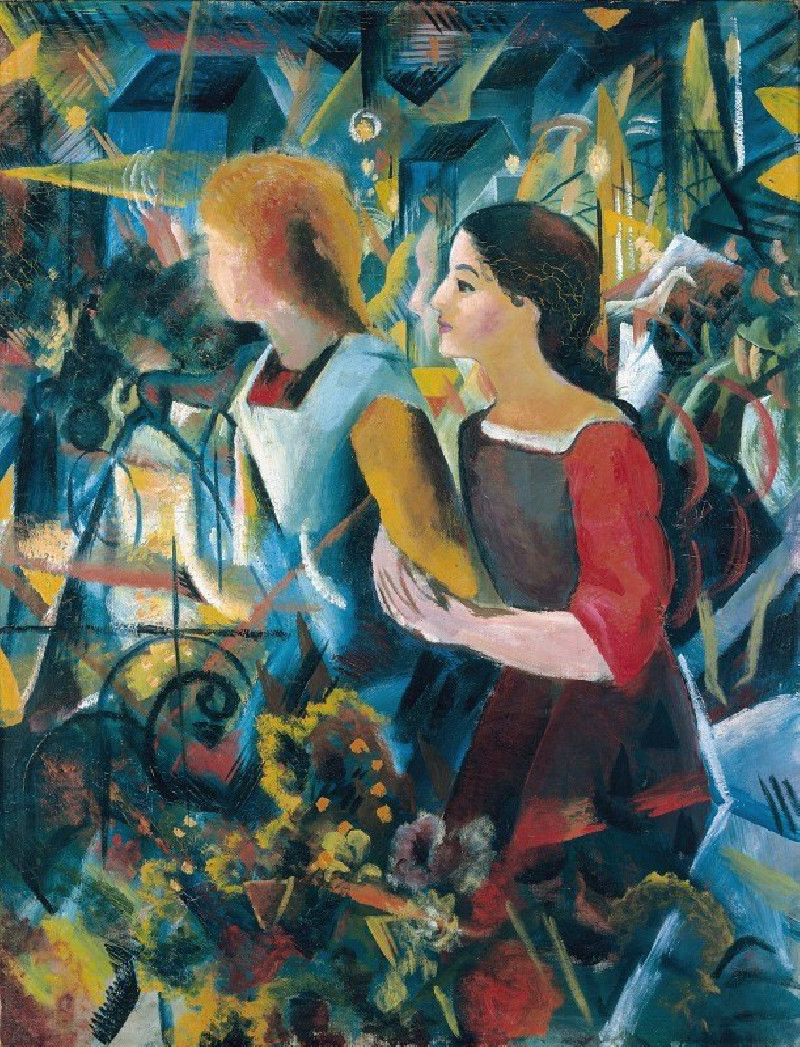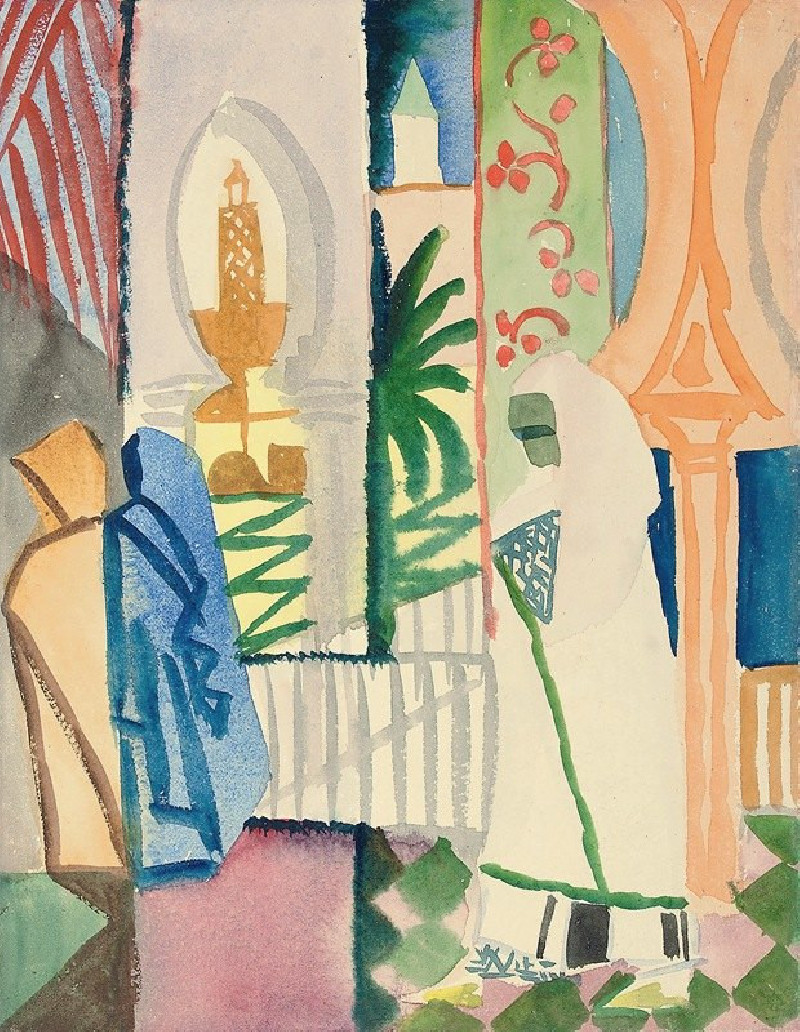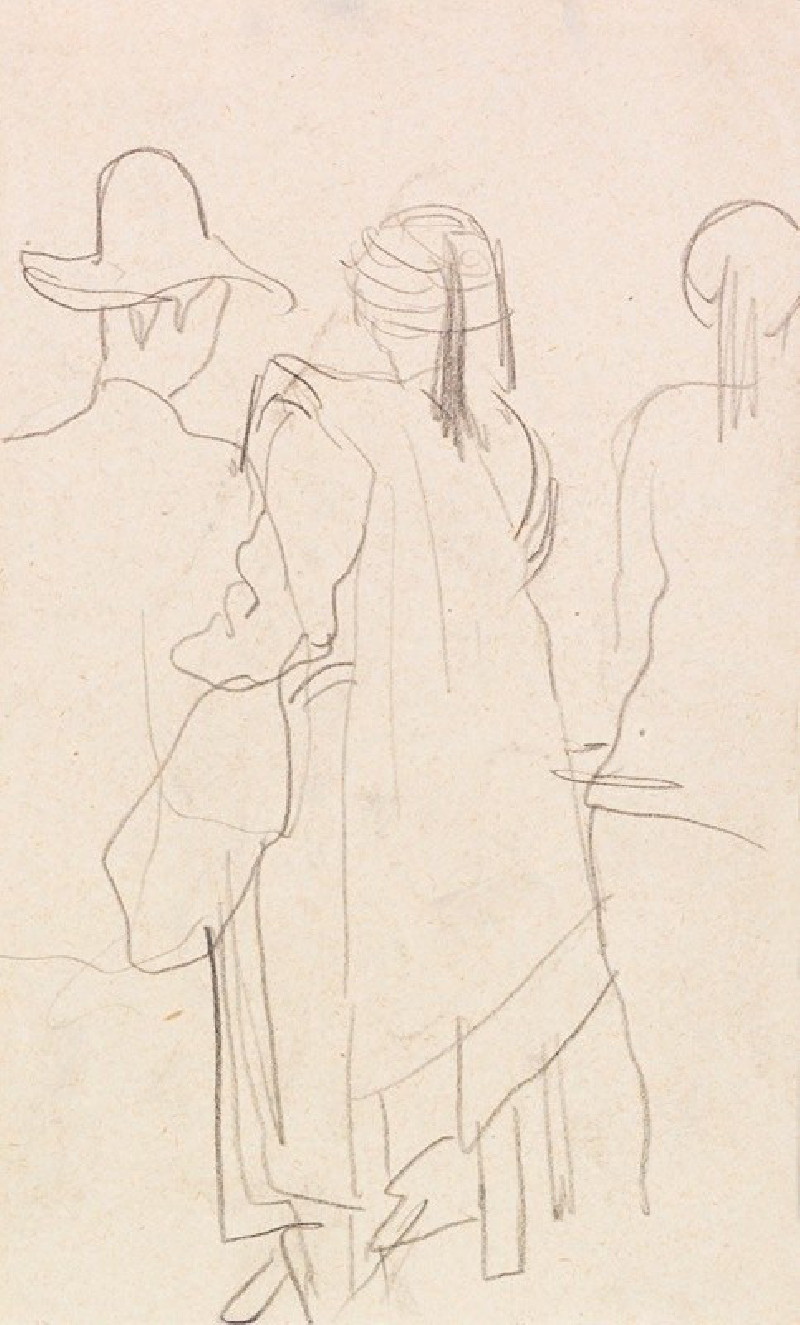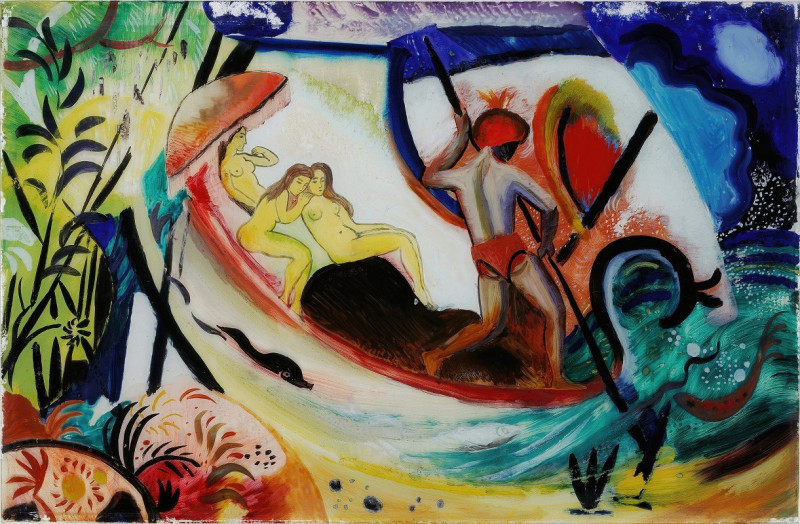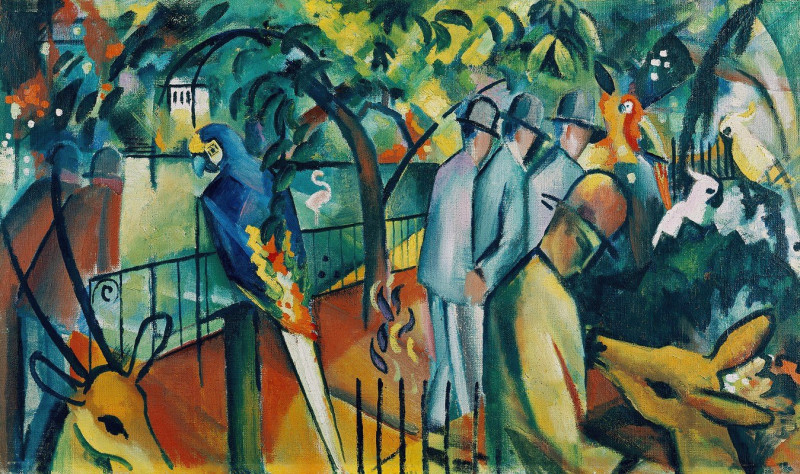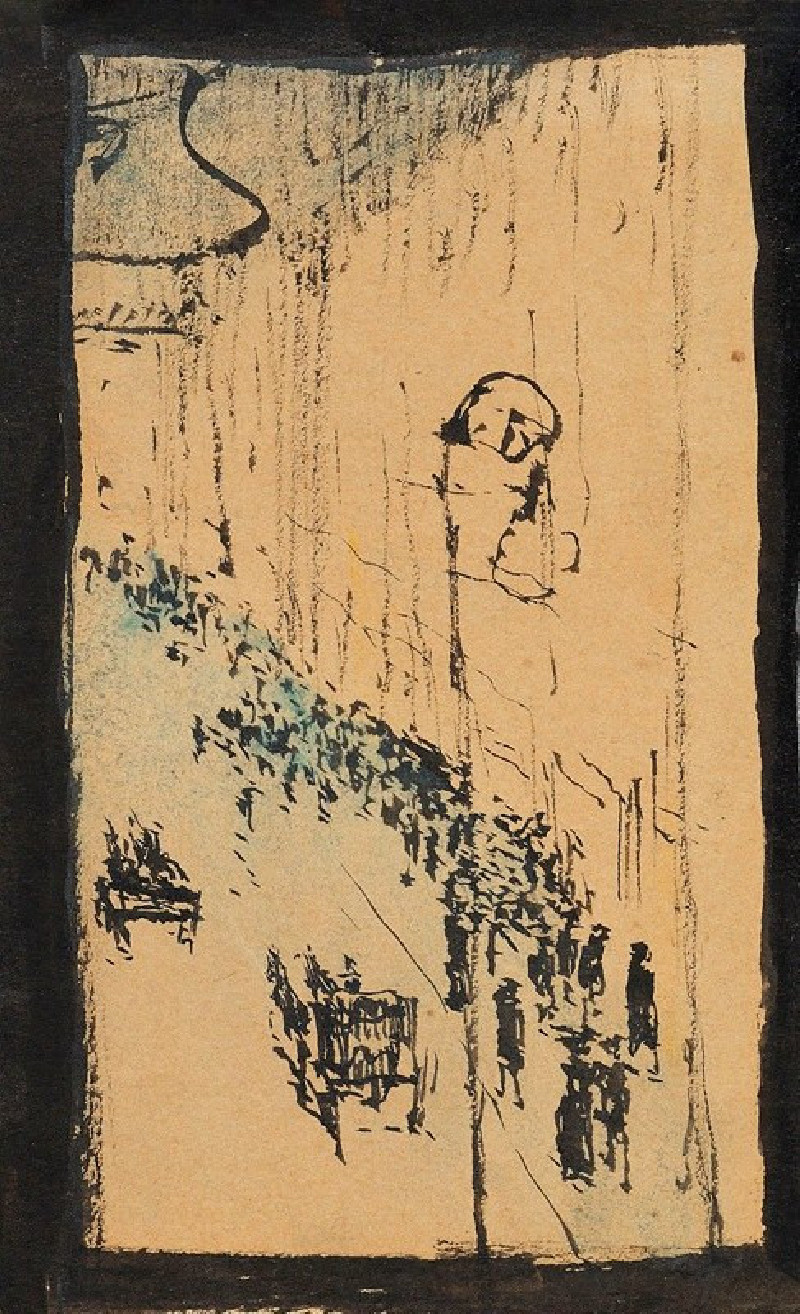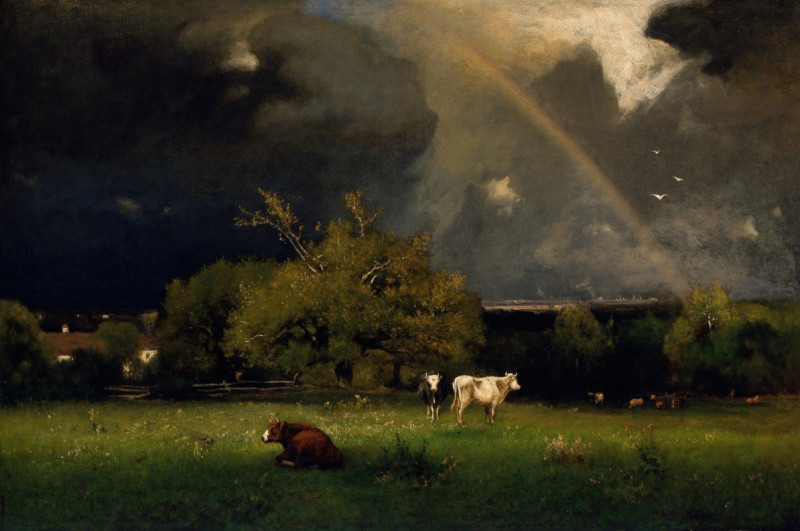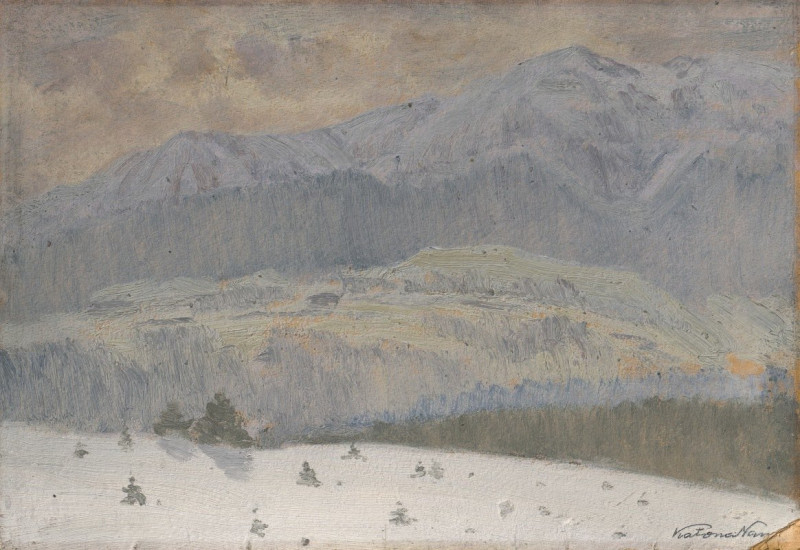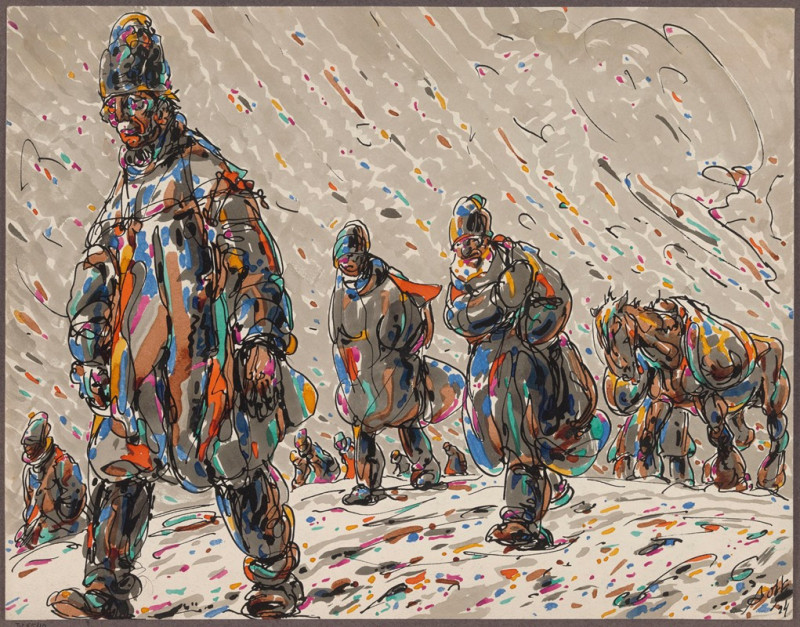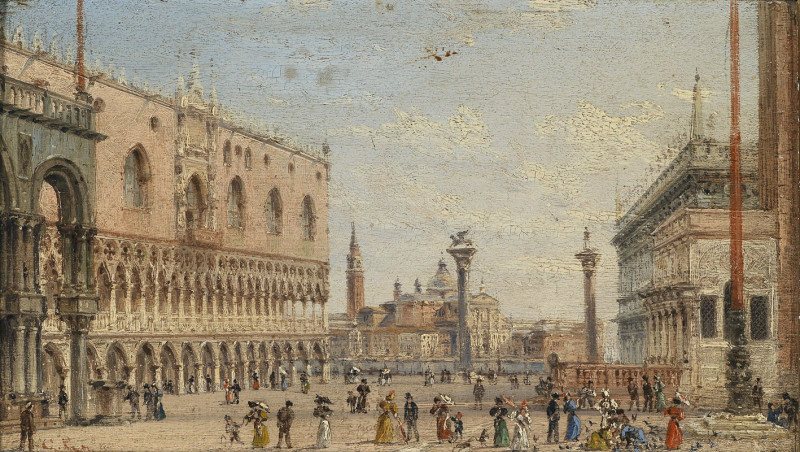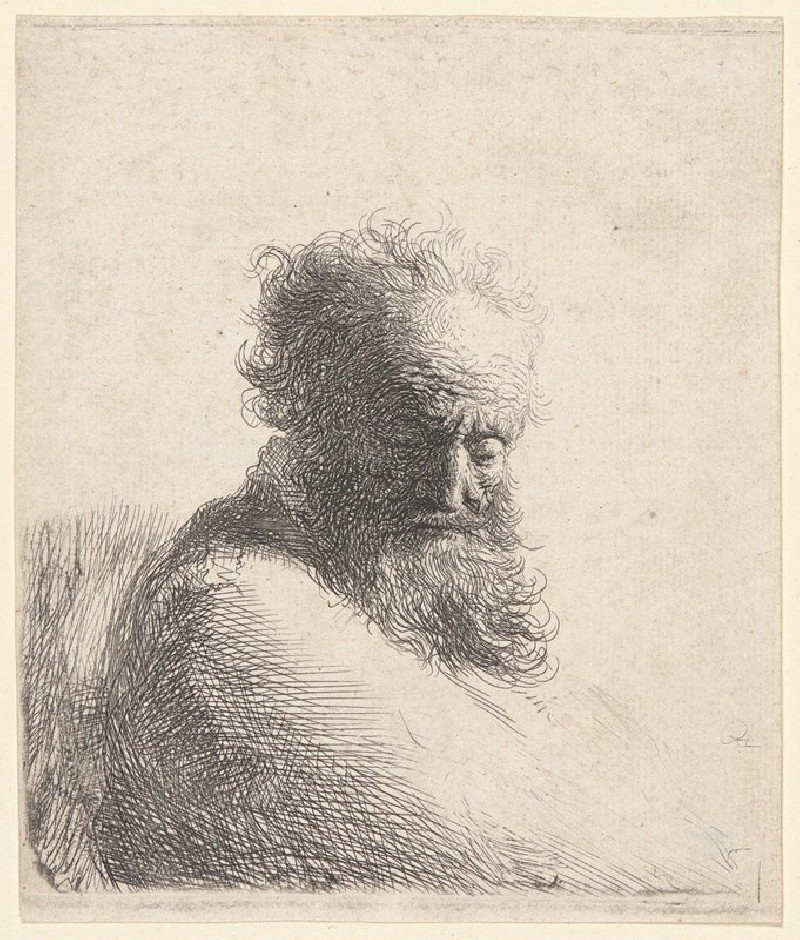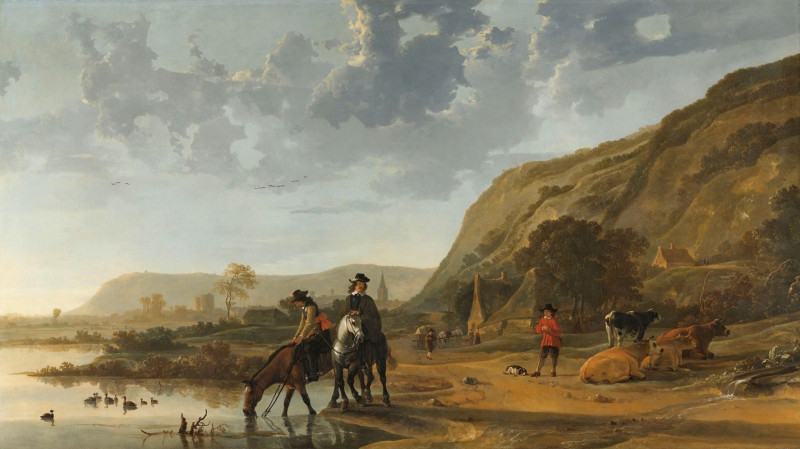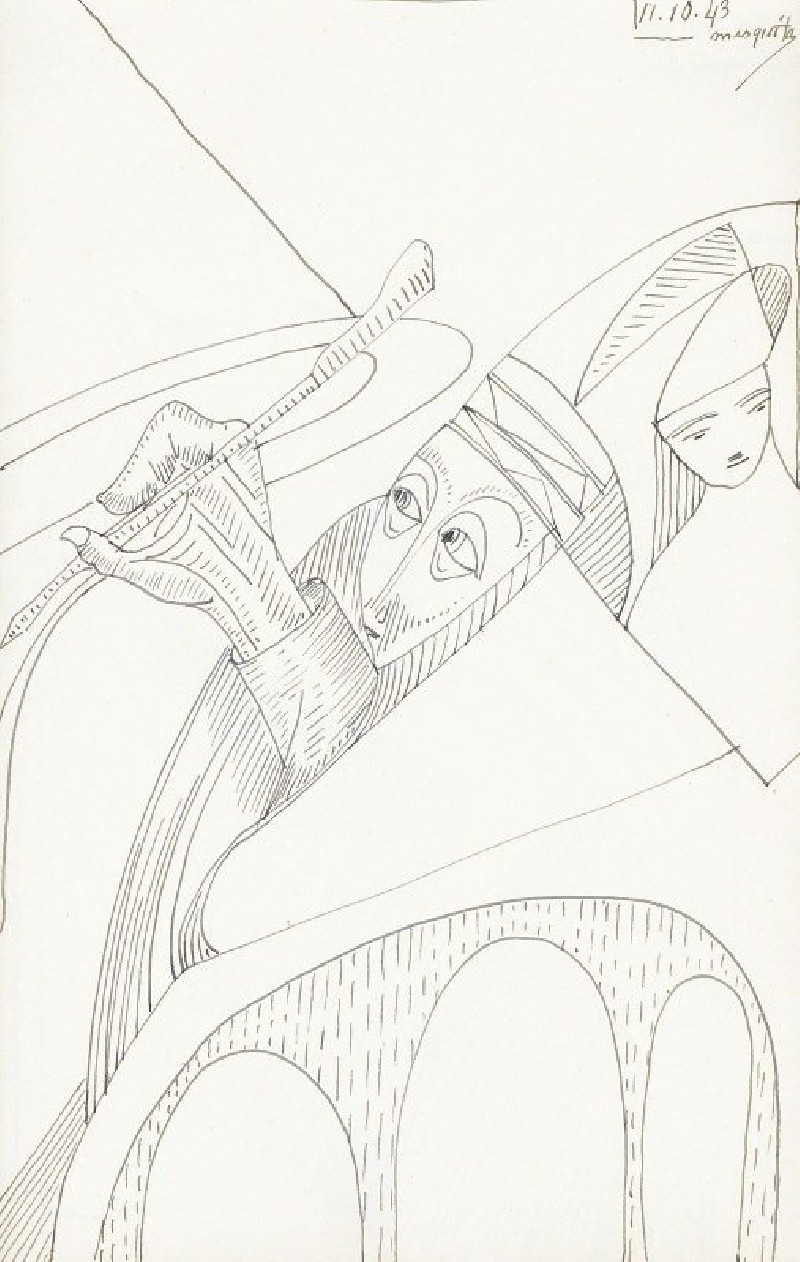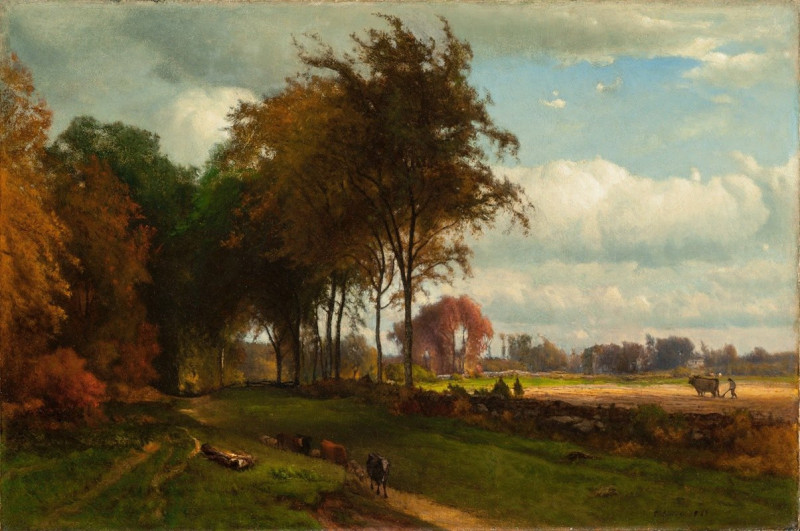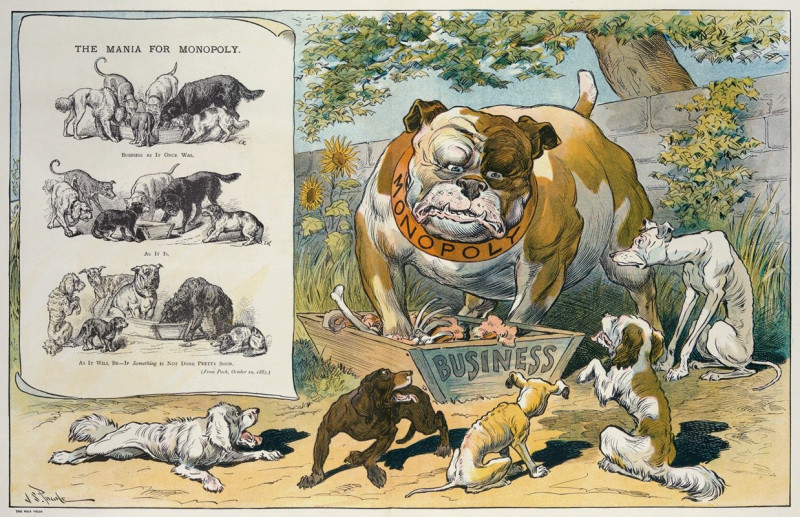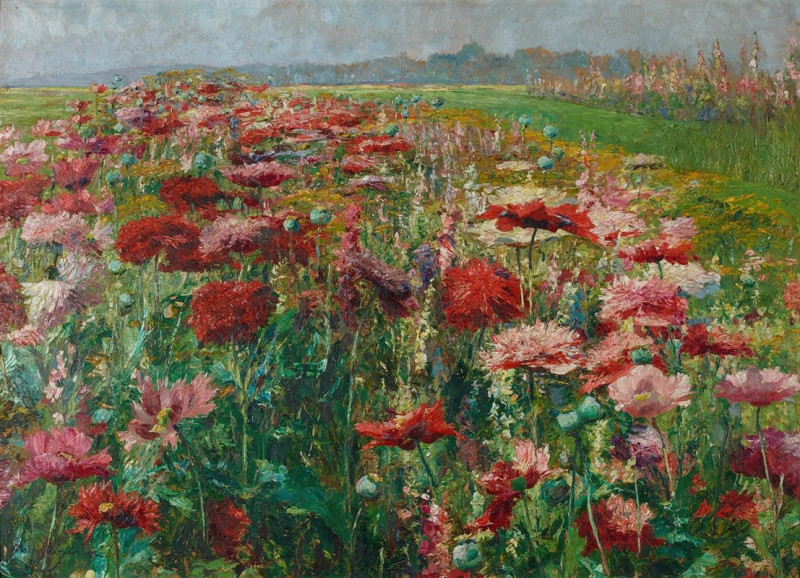Straße am Abend (1913)
Technique: Giclée quality print
Recommended by our customers
More about this artwork
"Straße am Abend," painted by August Macke in 1913, expresses a distinctive harmony of spontaneous brushwork and subtle abstraction, typical of his pioneering style. This composition captures an evolving, ephemeral street scene at dusk, conveyed through softened outlines and a muted color palette. Macke's expert manipulation of watercolors bleeds shapes into one another, adding a dreamlike quality that blurs the lines between the tangible world and the painterly vision.The painting evokes the gentle decline of day with deep blues and soft purples, creating shadows that play against the lighter patches, perhaps remnants of daytime or reflections of street lamps not yet visible. Figures seem to float across the canvas, their forms rendered in silhouettes and softened shapes, suggesting movement and the transient nature of a fleeting moment. This scene might be a busy street, but in Macke's vision, it is transformed into a tranquil, almost poetic convergence of figures and urban elements.
Delivery
Returns
August Macke (3 January 1887 – 26 September 1914) was a German Expressionist painter. He was one of the leading members of the German Expressionist group Der Blaue Reiter (The Blue Rider). He lived during a particularly innovative time for German art: he saw the development of the main German Expressionist movements as well as the arrival of the successive avant-garde movements which were forming in the rest of Europe. Like a true artist of his time, Macke knew how to integrate into his painting the elements of the avant-garde which most interested him.

